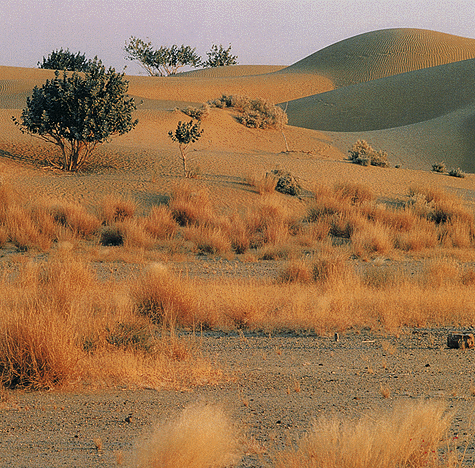
The variability of life on Earth, its living variety is generally referred to as biodiversity. The great number of species of plants, animals, and microorganisms, the huge diversity of genes in these species, the different ecosystems on the world, for instance deserts, rainforests and coral reefs are all part of a naturally diverse Earth. Suitable conservation and defensible development schemes challenge to identify this as being fundamental to any approach to stabilizing biodiversity. In some way or form almost all cultures have their roots in biological diversity. Deteriorating biodiversity is consequently a concern for several reasons.
Biodiversity increases ecosystem productivity somewhere species, no matter how small, all have an imperative role to play. For example,
• A large volume of plant species means a greater diversity of crops
• Greater species variety make sure natural sustainability for all life forms
• To recover from variable catastrophes, healthy ecosystems can better endure.
• Hence, while we direct this planet, we still requisite to conserve the diversity in wildlife.
The climate is fluctuating. The earth is warming up, and there is now devastating scientific consent that it is happening, and human-induced. With increase of global warming, species and their habitats decrease, probabilities for ecosystems to adapt naturally are fading. Climate change may one of the greatest threats facing the world. Recent studies show increasing temperatures in several regions, and/or increasing extremities in weather patterns. The association between climate change and biodiversity has long been recognized. The IPCC has forecast that by 2100, supposing that the existing trends in burning fossil fuels endure, the surface of the Earth will warm on average by as much as 6 degrees Celsius (around 11 degrees Fahrenheit) or more. It is not conceivable to expect how furthermost species, with our own, and how utmost ecosystems, will respond to such life-threatening warming, but the effects are expected to be disastrous. Only climate change is expected to threaten with extinction approximately one quarter or more of all species on land by the year 2050, exceptional even loss of habitat as the major threat to life on land.
From a human point of view, accelerating biodiversity loss and the rapid climate changes threats human security. In Pakistan, climate change is previously have influence on biodiversity, and is expected in the upcoming decades to become increasingly more substantial threat. Loss of ice from Arctic sea threatens biodiversity throughout the entire biome and beyond. The related pressure of ocean acidification, resulting from higher concentrations of carbon dioxide in the atmosphere, is also already being observed. Under current levels of climate change ecosystems are previously show adverse impacts which is uncertain compared to future proposed changes. In addition to warming up temperatures, more frequent extreme weather events and changing trend of drought and rainfall may be expect to have major effects on biodiversity.
ADAPTING TO CHANGE
The extent of the threat of the global warming to biodiversity of terrestrial environment at the global level by using vegetation models has been studied and the results recommend that, by the end of this century, in some cases could equal or even exceed the extinction rates of terrestrial plant and animal species caused by global warming, due to deforestation in some tropical hotspots. Researchers approve that the world will continue to warm for some time even if greenhouse gas emissions are somehow restricted immediately as human-induced global warming is happening. Some species, mainly microorganisms and invertebrates with short generation times, might be able to acclimate to changing conditions or evolve in response to global warming. But for many species, especially those already exceptional and inhabit restricted climatic envelopes, global warming could pose an overwhelming challenge.
In Pakistan, action plans for numeral endangered species have been prepared that attempt to address the possible influences of global warming. At the national level, climate change has also become imperative to alleviate the impact and assume strategies that focused on eradicating threats and building resilience in Pakistans ecosystems to help them, adapt to climate change and other threats. The plan must attempt to participate all Pakistanis in biodiversity and suggests concrete and measurable steps in developing resilience in a cost effective way. Unfortunately, the threats associated with global warming and climate change continue to increase with the failure of governments worldwide to reach a consensus around decreasing emissions of CO2 and other greenhouse gases to levels that limit impacts upon biodiversity. Some of the effects of global warming may be rapid, but in many cases societies will have some years to acclimate their management of biodiversity as conditions varies. Increasing our understanding of the effects of climate change on biodiversity, and developing practical ways of mitigating such effects, are critical to limit the damage. Even so, the dangers are great – for humans as well as our native plants and animals.
Water is essential to secure the biodiversity of Cholistan Desert because desert is the home to many rare species of plants and wild animals. Concerted efforts are required to preserve rare herbs and wildlife in the desert. Life is harsh for all species of plants and animals. The public and private sectors must work together to search for a solution to the water scarcity problem there. The Islamia University, Bahawalpur has started a research project on the issue looking for a viable solution to the problem.
The writers are associated with the Islamia University, Bahawalpur, and University of Agriculture, Faisalabad, Pakistan.